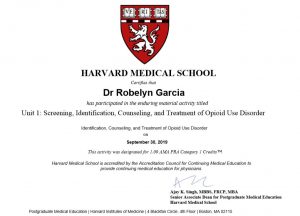New Harvard University Search Engines
ø
Stay up to date with your latest Harvard search results:
https://www.directory.harvard.edu
https://www.harvard.edu/search/?q_as=Robelyn%20Garcia
https://connections.harvard.edu
ø
Stay up to date with your latest Harvard search results:
https://www.directory.harvard.edu
https://www.harvard.edu/search/?q_as=Robelyn%20Garcia
https://connections.harvard.edu
ø
Your legacy is not only what you do … but also what the students you teach do! ?????? #Harvard2021
#Harvard2023 https://scholar.harvard.edu/drrobelyngarcia

2021-2022 Harvard Library Web Host Sharing Pilot
My Harvard Share http://robelyngarcia.share.library.harvard.edu
MEDIA-BASED SCHOLARSHIP
Host and share your digital scholarship projects – using videos, timelines, maps, delegated permissions and more – with a free domain name and access to versatile content management systems.
DIGITAL IDENTITY
Explore the notion of digital identity with a personal portfolio, and learn how publishing on the web can frame an academic identity. Migrate to a top-level domain once you graduate.
ALL HARVARD WELCOME
Students, staff, and faculty – across all professional schools and FAS – are welcome to engage with this medium-term hosting pilot. Contact matt_cook@harvard.edu or visit https://share.library.harvard.edu for more info.
ø
As Harvard University and a myriad of other brick-and-mortar universities move classes online amid the coronavirus pandemic, eLearning is at the forefront of post-secondary education.
Notice each element has a box around it. For example the Header, the Menu and the Description.
Dynamic Elements: 1-Header, 2-Article Aside One, 3-Article Aside Two, 4-Aside One, 5-Aside Two
CSS Grid enables course designers the ability to move page elements with ease.
CSS Grid enables course designers and Professors the ability to personalize their online course.
“To really get good, it takes an understanding of the fundamentals, lots and lots of hands-on practice, and the ability to learn from others” Harvard Digital Media Professor Larry Bouthillier.
ø
My latest Post-Graduate course from: https://postgraduateeducation.hms.harvard.edu

ø
Screening, Identification, Counseling, and Treatment of Opioid Use Disorder.
ø
ø
A Gloabal Harvard Graduate Degree. Earn your way to an Ivy League Education.
https://www.extension.harvard.edu/academics/graduate-degrees
Dr. Robelyn Garcia is a Multidisciplinary Post-Doc Scholar coming to Harvard as a 2018 Private Cyber Grant Recipient. With eight college degrees, her mission is to educate and motivate. She has a Ph.D. in Education, a Masters of Science in Kinesiology Exercise Science, a Masters of Education in Passing, a Graduate Certificate in Gerontology, a Masters in Aging and Lifespan Development, a Masters of Arts in Criminology and Criminal Justice, a Bachelors of General Studies in Social Sciences, and an Associates of Arts in Broadcasting. Garcia has just finished her course work for a Doctor of Behavioral Health Degree at Arizona State University with Internship and Culminating Project to follow in Telehealth, Online Education, Elder Health, Geriatric Sport Science, Biogerontology Health, Lifespan Health, Injury Prevention and or Behavioral Interventions for reducing Chronic Pain, Depression and Obesity. Dr. Garcia is also a Faculty Affiliate for the ASU Biomimicry Center.
“Robbie” is a former Professional Basketball Player, Kinesiology Professor, President Emeritus of the SW Jr. NBA-WNBA and Lifespan Professor. She spends her free time volunteering for Cycling Charities, Senior Games and Special Olympic organizations. Her Certifications Include: Harvard Medical School Lifestyle Medicine CME, American Red Cross CPR Instructor, Yale Medical School CME Health Counselor, ACEP Level 2 Certified Coach, First Aid for Sports, ACEP Drugs in Sport, NESTA Weight Room Specialist, American Red Cross Water Safety Instructor, First Aid, Lifeguard, Health Professional CPR, Aquatics Level 7 Advanced Skills Instructor, Arizona Certified College Instructor (Kinesiology, Adult Education), and AFSA Indoor Cycling Certified Spinning Instructor. She has also succesfully completed several courses at The Telebehavioral Health Institute and The Harvard Medical School Global Academy.
Dr. Garcia has lived in 25 cities, 11 states and 3 countries. She currently resides in North Scottsdale, Arizona, USA.
